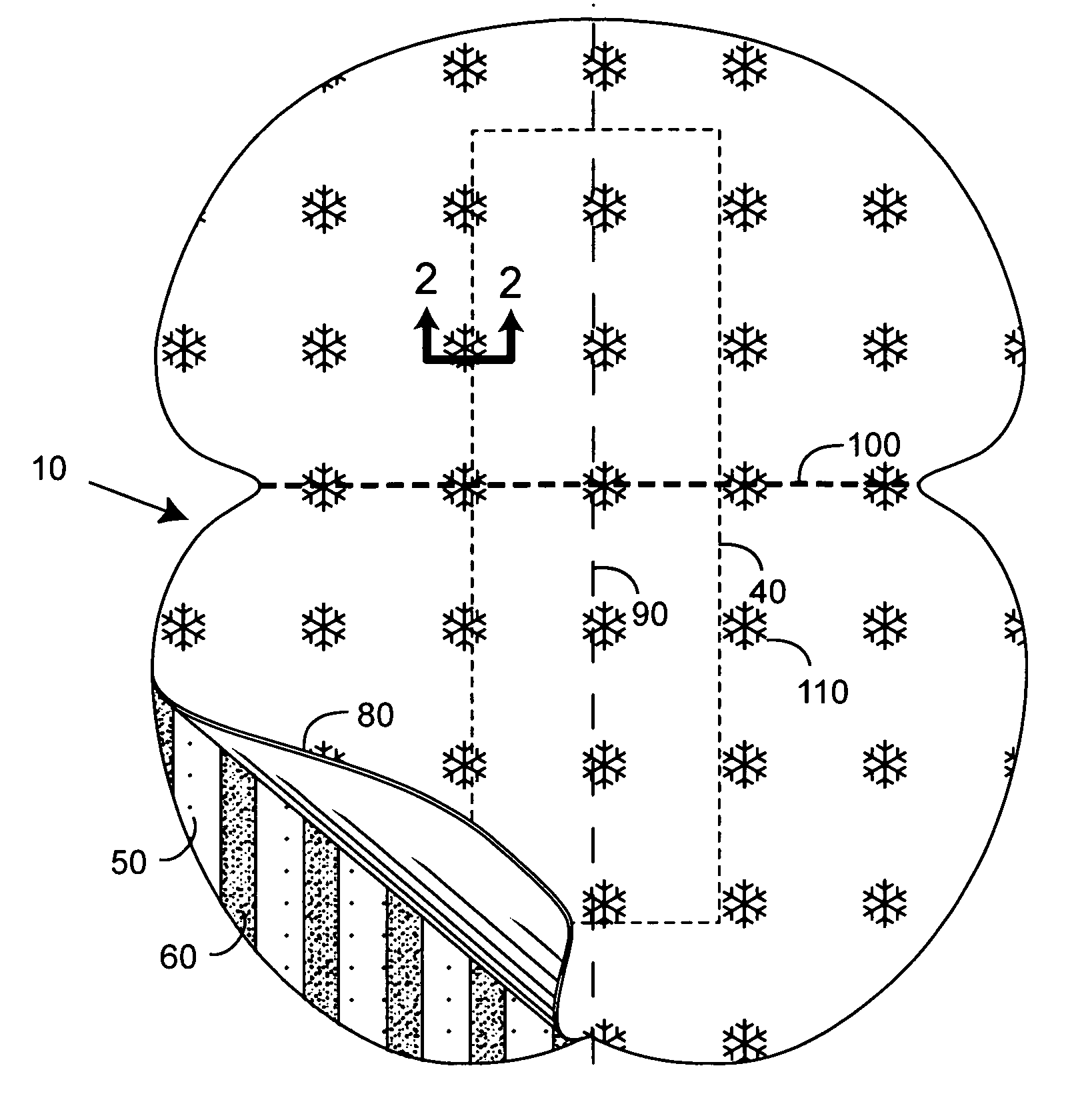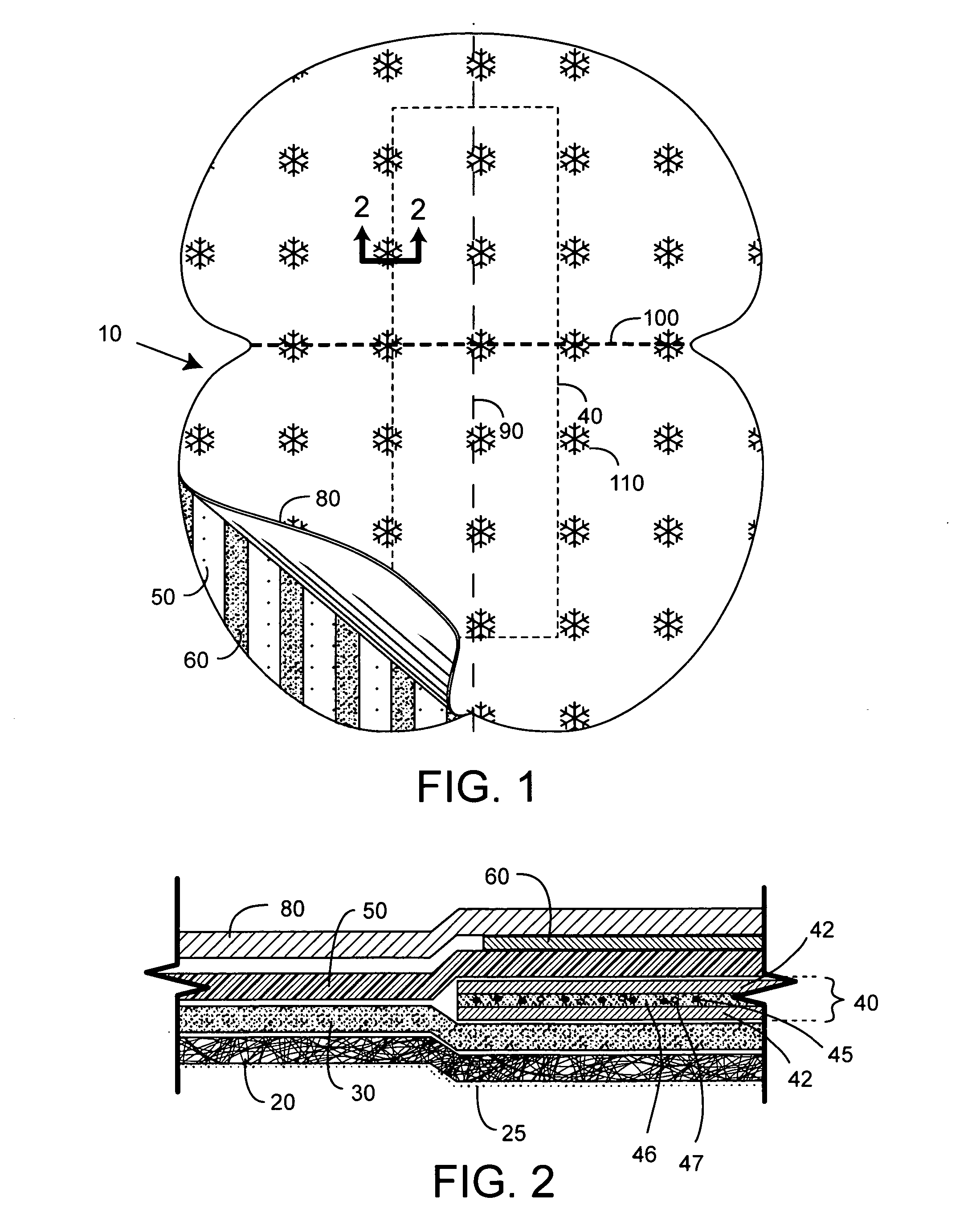Disposable underarm garment liner
a garment liner and underarm technology, applied in the field of personal hygiene, can solve the problems of insufficient use of such devices, inconvenient use, and large bulk of prior art devices, and achieve the effect of preventing wearers' perspiration from soiling the garmen
- Summary
- Abstract
- Description
- Claims
- Application Information
AI Technical Summary
Benefits of technology
Problems solved by technology
Method used
Image
Examples
Embodiment Construction
[0011]FIG. 1 illustrates an underarm garment liner 10 for preventing a wearer's perspiration from soiling a garment (not shown). The liner 10 includes, in its simplest embodiment and in the following order, a non-woven layer 20, an air laid paper layer 30, a hygroscopic absorption layer 40, a water-impervious layer 50, and an adhesive layer 60 (FIG. 2). The non-woven layer 20 is adapted for contacting the wearer's skin and to convey perspiration away from the skin through capillary action to the absorbent air laid paper layer 30, which draws moisture away from the non-woven layer 20 and conveys the moisture to the hygroscopic absorption layer 40. Further, the non-woven layer 20 is preferably embossed with a repeating pattern of flowers, or the like, to make the liner 10 more aesthetically pleasing. The layers are all preferably adhered together through use of hot-melt adhesive, other suitable adhesive, or by ultrasonic or other welding techniques as are known in the prior art.
[0012...
PUM
 Login to View More
Login to View More Abstract
Description
Claims
Application Information
 Login to View More
Login to View More - R&D
- Intellectual Property
- Life Sciences
- Materials
- Tech Scout
- Unparalleled Data Quality
- Higher Quality Content
- 60% Fewer Hallucinations
Browse by: Latest US Patents, China's latest patents, Technical Efficacy Thesaurus, Application Domain, Technology Topic, Popular Technical Reports.
© 2025 PatSnap. All rights reserved.Legal|Privacy policy|Modern Slavery Act Transparency Statement|Sitemap|About US| Contact US: help@patsnap.com


